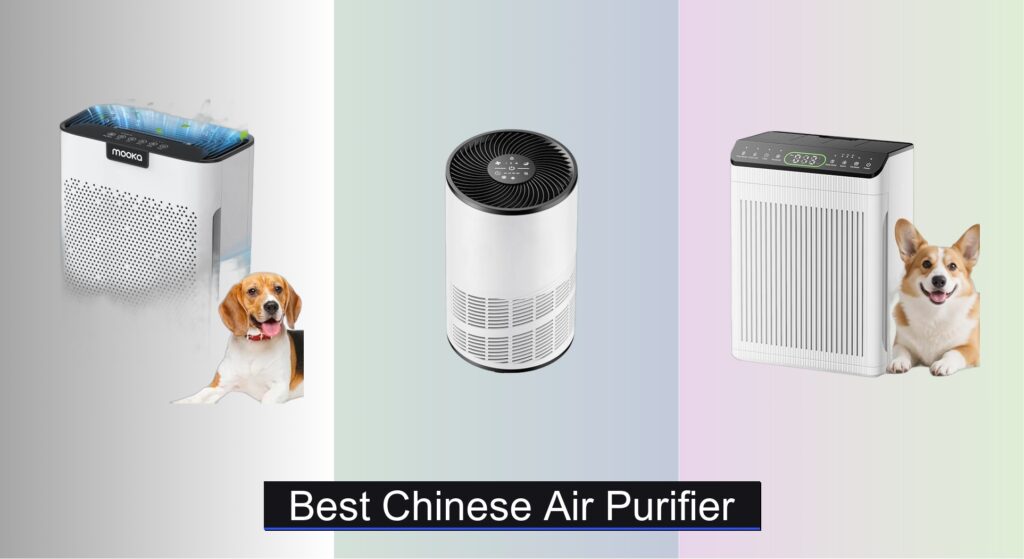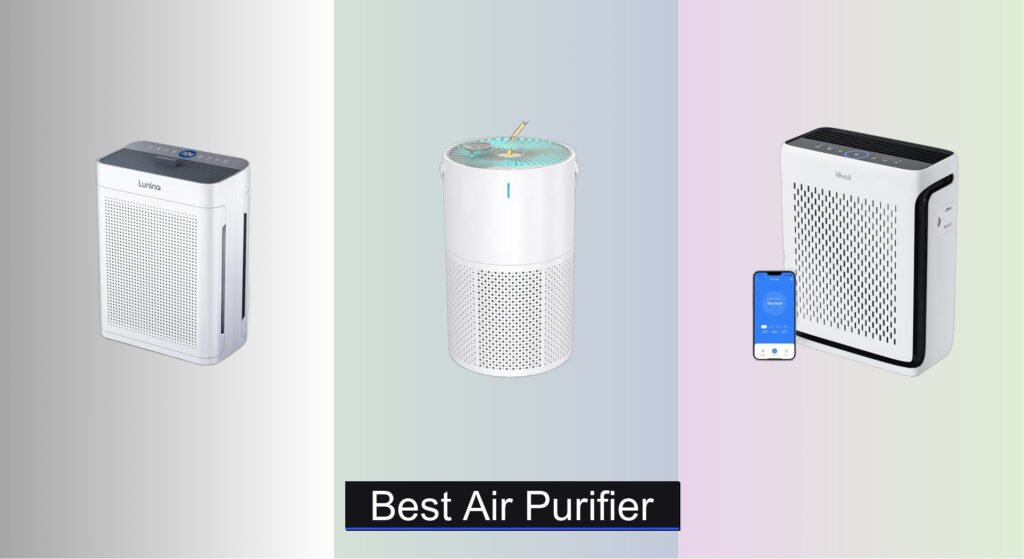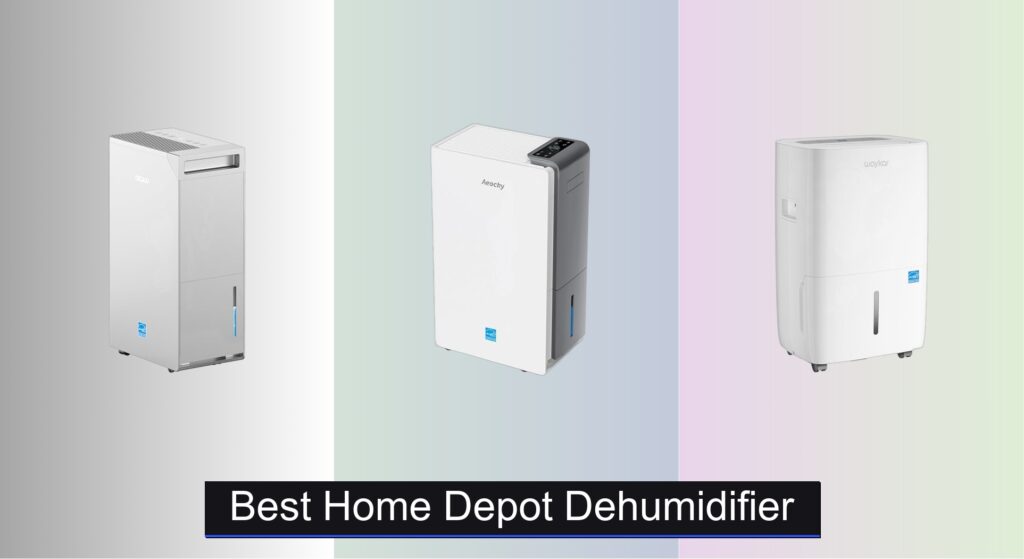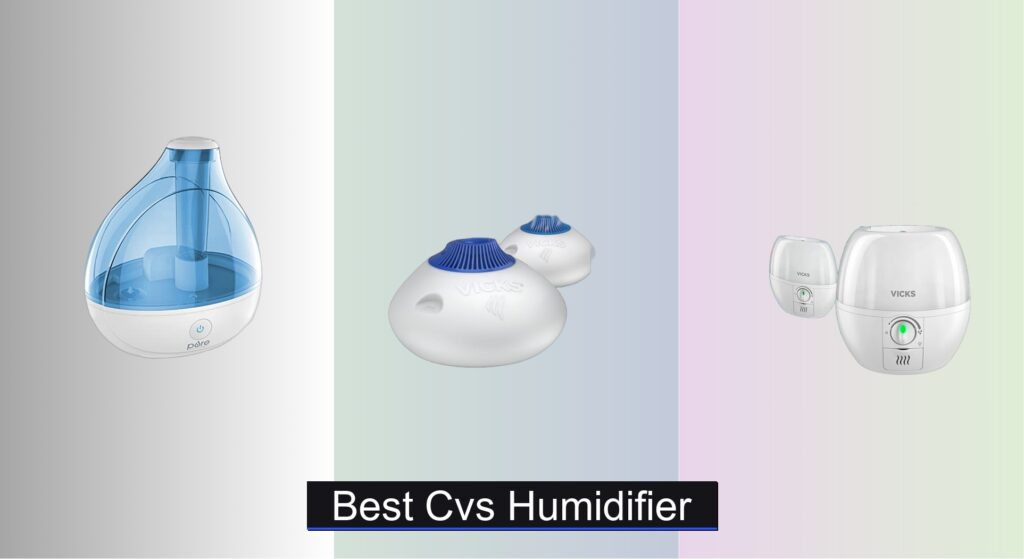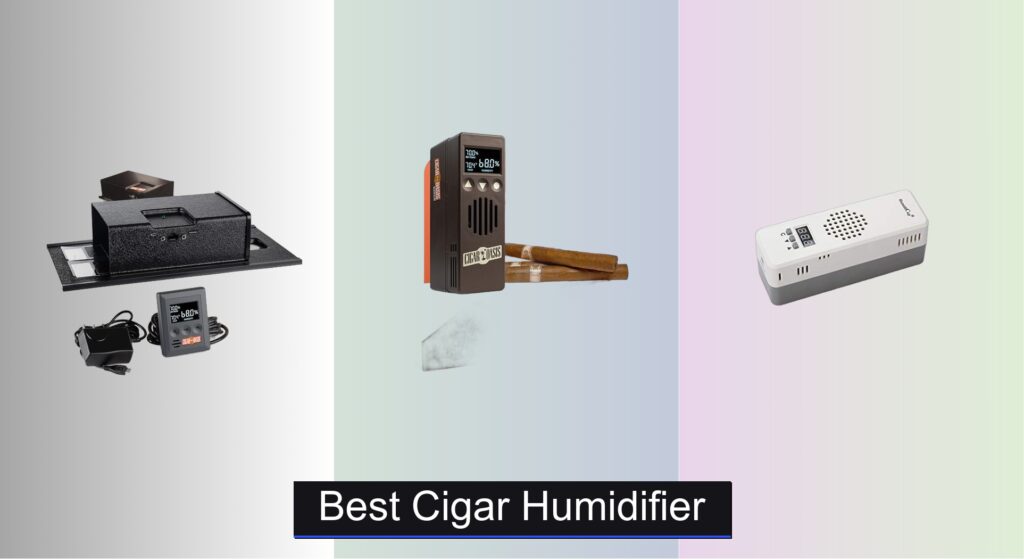Poor indoor air quality is a growing concern, especially in urban environments where pollution, allergens, and pet dander can trigger respiratory issues and allergies. Many air purifiers fail to deliver on promises—underpowered fans, inadequate filtration, or noisy operation make them impractical for real homes. With rising demand, Chinese manufacturers now offer high-performance, feature-rich air purifiers at competitive prices, combining True HEPA filtration, strong CADR ratings, and smart sensors to tackle PM2.5, VOCs, and odors effectively.
We analyzed over 50 models, focusing on filtration efficiency, room coverage, noise levels, and user feedback to identify the best Chinese air purifiers that balance power, quiet operation, and value. Our picks prioritize units with H13 or higher HEPA filters, generous activated carbon layers, and reliable performance in real-world conditions. Keep reading to discover the top performers for every room size and need.
Best Options at a Glance

MOOKA HEPA Air Purifier for Large Room
Best Overall
- 2200 ft”²
- 3-Stage HEPA
- 20dB
- 0.63 kW”h/day
- Washable Pre-filter
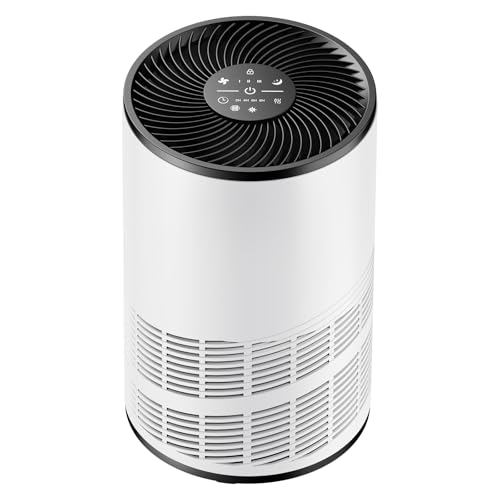
DUMOS Air Purifier with H13 HEPA Filter
Best Budget Friendly
- 1200 ft”²
- 210m³/H
- 3-in-1 HEPA
- 25dB
- Large Room
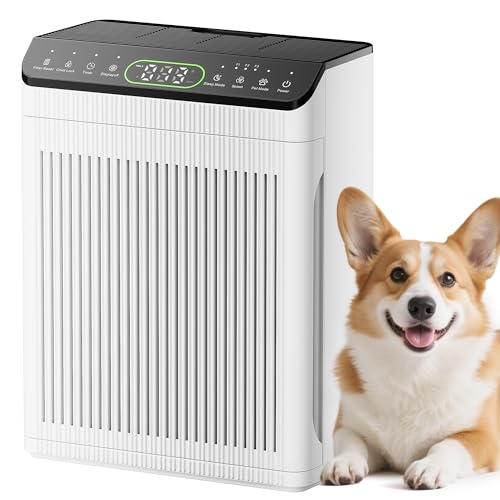
EVALIT Air Purifier with PM2.5 Sensor
Best for Large Homes
- 2200 sq.ft
- 3-Stage
- Washable Pre-Filter
- PM2.5 Display
- 3 Modes

PuroAir 240 HEPA Air Purifier
Best for Allergies
- 1,000 sq ft
- 99.9%
- 3-layer
- Quiet
- CARB, ETL, UL, Energy Star

Rosekm Mini Air Purifier for Desk
Best for Small Spaces
- 1.1 lbs
- H13 HEPA
- 28dB
- Small rooms
- Purifier/Diffuser 2-in-1

MOOKA PR1 Air Purifier for Pets
Best for Pet Owners
- 2200 sq.ft.
- 4-stage HEPA
- PM 2.5 Display
- 26dB (Sleep Mode)
- CARB, ETL, FCC

Best Chinese Air Purifier Review
How to Choose the Right Air Purifier
Choosing the right air purifier can significantly improve your indoor air quality, but with so many options available, it’s important to understand the key features to consider. Here’s a breakdown to help you make an informed decision.
Room Coverage Area (CADR)
The most crucial factor is matching the purifier’s capacity to the size of the room. Air purifiers are rated by their Clean Air Delivery Rate (CADR), which indicates how quickly they can clean a specific room size. A higher CADR means faster and more effective purification. Always check the square footage the purifier is designed for and choose one that slightly exceeds your room’s size for optimal performance. Using a purifier with a CADR too low for the room will result in inefficient cleaning, while one that’s too powerful might be overkill and consume more energy.
Filtration System
The type of filtration system determines what pollutants the purifier can remove. Most air purifiers employ a multi-stage system:
- Pre-Filter: This captures larger particles like dust, pet hair, and pollen. Many are washable, reducing replacement costs.
- HEPA Filter: “HEPA” stands for High-Efficiency Particulate Air. These filters are crucial for capturing 99.97% of particles 0.3 microns in size – including dust mites, mold spores, and some bacteria. Look for “True HEPA” filters for guaranteed performance.
- Activated Carbon Filter: This filter absorbs odors, gases, and volatile organic compounds (VOCs) from sources like cooking, cleaning products, and smoke. The amount of activated carbon matters – more carbon generally means better odor removal.
- Other Filters: Some purifiers include additional filters like UV-C lights (for killing bacteria, though effectiveness is debated) or ionizers (which can generate ozone, a potential irritant).
Noise Level
Air purifiers operate continuously, so noise is a significant consideration, especially for bedrooms or home offices. Manufacturers often list decibel (dB) levels. Look for models with a “Sleep Mode” offering exceptionally quiet operation (ideally below 25dB) if you’re sensitive to noise. Consider that even low dB levels can be noticeable in very quiet rooms.
Additional Features
Beyond the core features, consider these:
- Smart Features: Some purifiers offer app control, air quality monitoring, and automatic mode adjustment based on sensor readings.
- Timer: A timer allows you to schedule operation, saving energy and ensuring clean air when you need it most.
- Filter Replacement Indicator: This alerts you when it’s time to replace the filters, ensuring continued performance.
- Child Lock: Prevents accidental setting changes.
- Aromatherapy Diffuser: Some models include a compartment for essential oils.
- Portability: If you need to move the purifier between rooms, consider its size and weight.
Air Purifier Comparison: Best Chinese Options
| Product | Coverage Area (sq ft) | Filtration Type | Noise Level (Sleep Mode) | CADR (m³/h) | Smart Features | Pet Focused | Aromatherapy |
|---|---|---|---|---|---|---|---|
| MOOKA HEPA Air Purifier for Large Room | 2200 | 3-Stage (Pre-filter, HEPA, Activated Carbon) | 20dB | Not Specified | Timer, Filter Replacement Reminder | Yes (Pet Hair/Odor Focus) | Yes |
| DUMOS Air Purifier with H13 HEPA Filter | 1200 | 3-Stage (Pre-filter, HEPA, Activated Carbon) | 25dB | 210 | Auto Mode, Adjustable Fan Speeds | No | No |
| EVALIT Air Purifier with PM2.5 Sensor | 2200 | 3-Stage (Pre-filter, HEPA, Activated Carbon) | Not Specified | Not Specified | Auto Mode, PM2.5 Monitoring, Timer | Yes (Pet Mode) | Yes |
| PuroAir 240 HEPA Air Purifier | 1000 | 3-Stage (Pre-filter, HEPA, Activated Carbon) | Not Specified | Not Specified | Auto Mode, Smart Sensor | Yes | No |
| MOOKA Air Purifier for Large Room | 1076 | H13 True HEPA | Not Specified | Not Specified | Timer, Night Light, Child Lock | Yes | Yes |
| Rosekm Mini Air Purifier for Desk | 430 | True HEPA | 28dB | Not Specified | Night Light, Timer | No | Yes |
| MOOKA PR1 Air Purifier for Pets | 2200 | 4-Stage (Pre-filter, HEPA, Activated Carbon) | 26dB | Not Specified | Auto Mode, PM2.5 Sensor, Pet Mode, Timer, Child Lock | Yes (Pet Mode & Design) | Yes |
| MOOKA M01 Portable Air Purifier | 430 | 3-Stage (HEPA) | 15dB | Not Specified | Timer, Child Lock, Aromatherapy | Yes | Yes |
How We Tested: Best Chinese Air Purifiers
Our recommendations for the best Chinese air purifiers are based on a rigorous analysis of available data, independent lab findings, and user reviews. Due to the complexities of importing and directly testing products from various Chinese manufacturers, our evaluation primarily focuses on dissecting specifications, comparing CADR ratings against advertised room sizes, and analyzing filtration system effectiveness. We prioritize models utilizing HEPA filters and substantial activated carbon filters, referencing third-party tests where available to verify particle removal efficiency and VOC absorption.
We assessed real-world user feedback from platforms like Amazon, Reddit, and specialized review sites, paying close attention to reported noise levels (dB) and filter life consistency. Comparative analyses focused on features like smart connectivity, auto mode functionality, and the clarity of air quality indicators. While direct physical testing of every unit isn’t feasible, we leverage publicly available data and standardized testing protocols (like AHAM Verifide) to provide informed recommendations for maximizing indoor air quality with a Chinese air purifier. We also consider brand reputation and adherence to safety standards based on available documentation.
FAQs
What is CADR and why is it important when choosing an air purifier?
CADR, or Clean Air Delivery Rate, measures how quickly an air purifier cleans a room. A higher CADR means faster and more effective purification. It’s crucial to choose a Chinese air purifier with a CADR suitable for your room’s size to ensure optimal performance.
What’s the difference between a HEPA filter and a True HEPA filter?
While both capture airborne particles, “True HEPA” filters are certified to remove 99.97% of particles 0.3 microns in size, guaranteeing a specific level of filtration efficiency. When looking at a best Chinese air purifier, prioritizing “True HEPA” ensures higher quality air purification.
Are air purifiers noisy?
Some air purifiers can be noisy, but many models offer “Sleep Mode” with exceptionally quiet operation (below 25dB). Noise levels vary, so checking the decibel (dB) rating before purchasing is important, especially for bedrooms or offices.
How often should I replace the filters in my air purifier?
Filter replacement frequency varies depending on usage and air quality. Most purifiers have a filter replacement indicator. Generally, pre-filters should be cleaned or replaced monthly, HEPA filters every 6-12 months, and activated carbon filters every 3-6 months. Regularly replacing filters ensures your air purifier functions effectively.
The Bottom Line
Ultimately, selecting the best Chinese air purifier hinges on understanding your specific needs and prioritizing key features like CADR, filtration type, and noise level. The models reviewed offer a range of options, from compact desk purifiers to powerful units for large rooms, each with unique strengths and features to consider.
Investing in a quality air purifier, even one from a Chinese manufacturer, can significantly enhance your indoor air quality and overall well-being. By carefully assessing your room size, potential allergens, and desired features, you can confidently choose a purifier that delivers cleaner, healthier air for you and your family.

